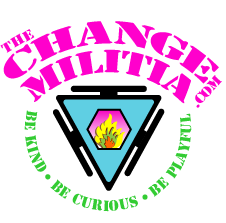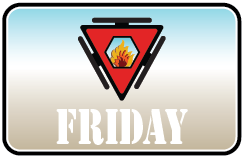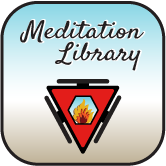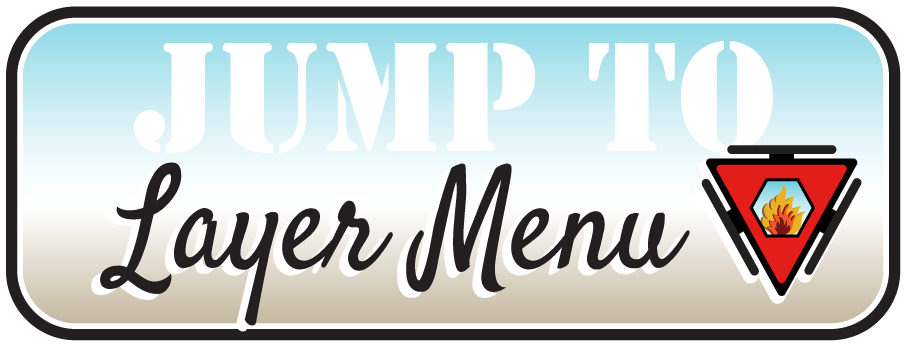Layer Five, Week Two – Sunday
- Morning – Watch Videos and Read Instructions Panting Horse Breath and Energy Distribution
- Evening – Read Week Two Concepts
- Evening – Practice Panting Horse Breath and Energy Distribution
Spend the day being more aware of all the things that require endurance. With every action and interaction, see if you can identify the pieces coming together to ensure continued movement.
The sixth of the seven balance components is Endurance. Everything you do for more than an instant requires some sort of endurance, from running to sleeping. Every relationship that lasts longer than a minute requires endurance. Ideas would never come to fruition without endurance. Every action, movement, conversation, bodily process, and thought needs an on-going energy supply to continue to exist. Lasting longer than the first day on the job takes endurance; even if you really like your job.
If you haven’t thought of endurance this way, expand your definition. Consider that to read this far has required endurance; even if you like what you are reading. Waiting to eat my breakfast is requiring endurance. Imagine the endurance your heart has. Being kind, happy, angry, sad, jealous, fulfilled, loving, and present all require endurance.
Endurance is composed of a tolerance for discomfort, efficient movement, collaboration, and something we haven’t discussed yet, essence.
- Tolerating Discomfort stimulates growth.
- Movement Efficiency optimizes the use of stored energy.
- Collaboration is the coming together of the pieces to refuel and sustain momentum.
- Essence is the underlying cosmic signal to continue, to pursue, and to be curious.
The Focus exercises this week will help you understand the elements of your endurance and where your imbalances reside or where they ebb and flow, pop up, or scatter like cockroaches.
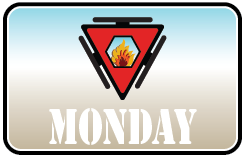
Layer Five, Week Two – Monday
- Morning – Practice Panting Horse Breath
- Evening – Monday Concepts
- Evening – Practice Energy Distribution
Consider your overall personal endurance. How would you rate yourself of a scale of 1-10? Feel into your answer for 60 seconds and then assign a number. Don’t beat yourself up or pat yourself on the back, be as honest as possible.
Tolerating healthy discomfort requires persistence, consistency, and determination.
Endurance requires an ability to tolerate discomfort because there is a fear component in every action without a known outcome. You are overruling your subconscious mind’s desire to maintain stasis. To persist requires that the discomfort that accompanies every fear be tolerated without signaling movement to stop.
Consider this with each of your bodies. Can you identify how you tolerate discomfort to ensure endurance mentally, emotionally, energetically, and environmentally as well as physically?
I have been running more and running differently. I have typically run in intervals. I run for a while, walk a while, run a while until it feels like I need to stop. Lately, I have been trying to run at a steady pace for extended periods of time. What I am finding is that my endurance system is so habituated to my old patterns that it is hard, really hard, to maintain a steady pace. When I start out, I find myself wanting to run faster. I have the urge to sprint. Once I run a while, I subconsciously start walking. My discomfort is triggering my habits. I am on the trails 6 or 7 days a week; my habits are ingrained. To increase my endurance to run at a steady pace, I need to retrain, re-habitualize, my system.
As I am running, I have been curious which of my bodies is least able to maintain endurance, which body is having the most challenge tolerating discomfort. What I am finding is that my mental body is sending out the signal to stop and my emotional body is completely shut down, not providing any input. My physical body is complaining in a constant, whining chatter. My plan is to spend a bit of time before I start running warming up all my bodies, encouraging collaboration, and coming to an agreement.
As I continue to train for my next race, I am going to be persistent, consistent, and determined to understand and overcome my reluctance to endure healthy discomfort in all my bodies. I’ll let you know what happens.

Layer Five, Week Two – Tuesday
- Morning – Practice Panting Horse Breath
- Evening – Read Tuesday Concepts
- Evening – Practice Energy Distribution
How would you rate your physical endurance? Do you run out of steam before the day is done? Can you keep up with your kids and friends? How often to you question your physical fitness? Where can you improve?
Endurance: tolerance for discomfort, efficient movement, collaboration, and essence.
Physical endurance requires some level of efficiency, both metabolic and movement. Using my running example above, my physical efficiency would be my stride mechanics, length, and turnover rate (how many steps I am taking in a minute).
Physical endurance requires maintaining efficiency below the aerobic threshold. Your aerobic threshold is the point where you can no longer maintain a movement without something changing. Aerobic movement is when your system can replenish the energy it is expending at the same level that it is burning it.
Metabolic efficiency happens as fitness improves, as systems habituate to increased load and demand. Imagine pouring water into a bucket with a hole in it; if the water is filling the bucket as fast or faster than it is leaking out the hole, it is aerobic. If the water can’t keep up with the depletion it is anaerobic. As you increase your fitness, your ability to refill the bucket improves and your endurance increases.
Endurance training does some amazing things. If you train consistently, your heart will get bigger, contract more strongly, and your blood volume will increase. You will grow new capillaries and your body will get better at redistributing blood where it is needed. You will lower your heart rate and blood pressure.
As you train, your system adapts, relaxes, into the movement. This systemic relaxation signals your subconscious mind that you are safe and it acts accordingly. Want to feel less stressed? Walk, run, bike, row, swim, or do something aerobic consistently.
Physical collaboration is also vitally important to your endurance. Remember all those isometric and isotonic movements we did in the earlier layers? The ability of your parts to work together without resistance improves efficiency and fluidity.
Physical essence is the sparks you feel when your body is flowing. It is the feeling of all your cells celebrating, communicating, and collaborating.

Layer Five, Week Two – Wednesday
- Morning – Practice Panting Horse Breath
- Evening – Read Wednesday Concepts
- Evening – Practice Energy Distribution
Emotional endurance? How long can you remain in an uncomfortably intimate space? How easy is it for you to remain empathetic with someone who is emotionally vibrant? How long can you remain ecstatic, overtly happy, or filled with anticipation? How uncomfortable do you get around someone who is crying, grieving, or completely triggered?
Mental endurance is how easy it is for you to remain focused. Maintaining focus, mental clarity, and conscious decision making requires endurance.
If emotional discomfort pulls at your soul, mental discomfort is like a radio that changes stations every 2.4 seconds. To endure mental discomfort requires persistence and determination. It requires a softening of your beliefs and demands. It requires the collaboration of your emotional and physical bodies. To have emotional endurance you must be emotionally balanced and not be in a position where your physical tension adds to your distraction potential, it requires collaboration.
The heart of mental endurance is self-confidence and self-assuredness. As you acknowledge your brilliance and stay present, your endurance will increase because you are not expending a bunch of energy resisting.
Mental endurance will be the heart of effortless fluidity. Your mind will get into a zone, distractions won’t distract, you will feel engaged and connected. Wonder, curiosity, and enchantment all have very high degrees of essence and mental endurance.
Sometimes when I write the content for The Change Militia I get to a place where the ideas, concepts, and words flow, emotions blossom, and my body hums with energy. My fingers type, seemingly, without any mental direction. The ideas translate to the keyboard effortlessly. In a slightly delayed reaction, I find myself reading what I am typing amazed at what is coming through. I am actively exploring that mental fluidity and endurance. Hopefully, I will be able to share my conclusions in future Layers.

Layer Five, Week Two – Thursday
- Morning – Practice Panting Horse Breath
- Evening – Thursday Concepts
- Evening – Practice Energy Distribution
Mental endurance? How many minutes can you stay focused before you allow yourself to get distracted? How long can you maintain an intention before you start to question it? How would you rate your ability to be persistent?
Emotional discomfort is probably the hardest thing for us humans to endure. Or maybe more accurately, changes to the focus of our emotional discomfort is the most difficult thing to tolerate. You adapt to your typical or everyday discomfort and changes to the normal are what will typically throw you off.
Emotional Endurance is your ability to fluidly metabolize the energy in your environment without getting overwhelmed (becoming emotionally anaerobic). Your emotional body is inherently fluid and your subconscious mind uses that fluidity to instantaneously unbalance you or to keep you unbalanced.
Think of the last time you were emotionally infringed, impinged, or unhinged. How did it happen? Did you consciously choose it? Emotional endurance allows you to tolerate the discomfort of changing emotional configurations without losing it.
Being emotionally efficient happens when you can feel the pull of distraction without reacting, maintaining your course. When you are emotionally efficient your life will not feel like a rollercoaster.
Emotional collaboration is fascinating. Imagine all your emotions getting together in a room and calmly agreeing on how they can all coexist in the most beneficial manner. My favorite example of emotional collaboration is the birth of my first daughter. I can viscerally remember the overwhelming emotions, feelings of wonder, joy, relief, and the shifting of my life. Sobbing in the soup of the moment was incredibly divine.
Emotional endurance as it relates to essence is a very sensory and somatic experience. There is a feeling that you will associate with your essence, an emotional quality partially described by bliss, presence, and grace. Essence feels transcendent, like you are incredibly connected to yourself and indivisible from everything around you. When you are feeling your essence, it feels effortless and if feels like your ability to sustain it is limitless. When you see someone who is glowing, that is the light of their essence.
Layer Five, Week Two – Friday
- Morning – Practice Panting Horse Breath
- Evening – Friday Concepts
- Evening – Practice Energy Distribution
Social or environmental endurance? How long can you listen to someone you care about talk about something you don’t care about? How well do you play with others and how long can you maintain a high level of collaboration before you want to disconnect? How long does it take before you are affected by the weather, traffic, noise, or crowds?
Environmental endurance is the degree to which you can tolerate the knuckleheads in your life without picking up a sledgehammer or buying a plane ticket to Outer Mongolia. It is about how little detrimental influence you can allow situations to have. It is about lowering your demands and reducing your resistance. Imagine what you could concoct if you saw every single thing in the produce section as an opportunity to fuel yourself?
I was on a mini-vacation, van camping with my big, brown dog. We were parked next to a beautiful river in a verdant forest. It was idyllic … until it wasn’t. I needed food and went into a grocery store in Cle Elum, Washington. The first thing I saw was a wall of 37 different kinds, shapes, and sizes of mayonnaise. I was horrified. When I got to the produce section, the only vegetables I could see were things I normally don’t eat. Potatoes, Iceberg lettuce, onions, carrots, and everything labeled as organic looked like it had been dying a slow death for weeks. I allowed my environment to completely deflate me. I allowed it to suck every drop of energy I had. I left the grocery store almost empty handed and headed out of town the next day. I allowed the grocery store to unbalance me. I gave an inordinate amount of energy to the story that I couldn’t be fulfilled and satisfied … and then I wasn’t.
Did you ever wonder why you feel exhausted after interactions with certain people? Do you know why you feel exhausted after emotional outbursts or verbal bantering? It is because they all burn energy faster than those energies are being replenished. You lack the endurance necessary to stay balanced.
The opportunity you have is to limit those kinds of interactions, reduce their drain, or do a better job of replenishing yourself in the midst of the interactions (or you can do all three).
When you learn to constantly bring in more energy than you expend, you will have limitless reserves. Feed off your environment by finding opportunities to metabolize existing energies. Take it all in! Be receptive instead of defensive. Allow people to be who they are without trying to change, judge, condemn, or resist. Let go of your demands that things around you be different. Welcome whatever is present as an opportunity and finally, begin to orient your life around the people and things that bring you joy, increase your fulfillment, and heat up your curiosity like a flamethrower.
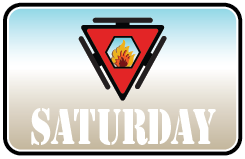
Layer Five, Week Two – Saturday
- Morning – Practice Panting Horse Breath
- Evening – Saturday Concepts
- Evening – Practice Energy Distribution
Reconsider your overall personal endurance. Take an average from each of the previous four days. Where was your endurance lacking? How much value to you give to each of the components (physical, mental, emotional, and social)? Which one do you value the least? Why?
The most unrecognized aspect of endurance is collaboration. In every moment, instance and interaction, things must work together to continue. Beyond coordinated movement, muscles used in running must be continually restocked with fuel. Conversations require that words work together, thoughts connect, and that both parties continue to participate. Lasting relationships happen when both sides choose to maintain a presence.
Innovation happens when curiosity, creativity, and persistence collaborate.
Successful endurance also requires the ability to distribute and redistribute energy. Feeling mentally fatigued? Go for a walk, it will rebalance your energy by redistributing some on the energy you generate in your physical body into your mental body. Meditation is so effective is because it allows your systems some time to redistribute energy between your bodies. Endurance is collaboration.
Energy redistribution is a key feature in endurance. It is easily recognizable in your physical activity. The difference between being able to walk a mile, jog a mile, and sprint a mile is how efficiently your system can replenish itself, how quickly and productively it can redistribute energy from storage to action.
Your physical endurance is a measure of your system’s ability to redistribute energy and collaborate. Your mental endurance level is determined by your ability to resist the non-beneficial distribution of energy (distraction). Your emotional aerobic level is the ability to redistribute energy in a way that maintains balance so that no single emotion overwhelms. Your energetic endurance highlights your ability to redistribute energy where it is needed to cultivate and sustain whole body balance.
Everything you do for more than an instant requires some sort of endurance. Increasing your endurance is a matter of finding which system or body is lacking and then expending some time, energy, and love to raise the bar. The higher your endurance level, the easier it is going to be to stay balanced.
Step 1 – Stand with your feet wider than hips with your feet in line with your upper legs.
Step 2 – The intention for this movement is to collect energy into the center of your head and then encourage it to descend into your lower belly.
Step 3 – Inhale dynamically (stronger than normal) and exhale dynamically. Inhale and exhale through the nose if possible.
Step 4 – Feel as if you are vacuuming the energy from your environment into your head and then pushing it down the front of your spine into your low belly.
Step 5 – Inhale/exhale 5 or 6 times and then assess your energy. Does it feel like the energy is staying in your head? Can you feel the energy descend into your belly?
Step 6 – If you start to feel light headed, take a break and begin again. Try inhaling more slowly.
Step 7 – Gradually increase the force and intention of the exhale.
Step 8 – Try to feel the energy transitioning from the center of your head down the front of your spinal column to your low belly.
Step 9 – At the bottom of the breath, take a moment and feel the energy being pulled into your low belly.
Step 10 – Gradually increase the dynamics of the movement.
Why it Matters – In the coming weeks and layers you will gain a greater and more subtle understanding of your energy, how it moves, and how to direct and control it. This dynamic practice can help you feel energy move in a powerful way.
Everyday Usability – This Kriya (moving meditation) is an excellent way to achieve laser focus. Going to talk to a group, this will help get you in the zone. About to tackle a double black diamond descent for the first time? This is your warm up. Heading in for a deposition for your part in the overthrow of a Central African dictatorship, do this first.
Progression – Try this seated, supine, and in other yoga postures. Try it in conjunction with a lunge. Try it in the middle of a long, aerobic workout.
Step 1 – Sit with your knees apart and the bottoms of your feet touching. If this isn’t comfortable or attainable, adjust as necessary.
Step 2 – Do a Current30 and assess your physical body and the energy of your physical body. Where does it feel balanced, imbalanced, energized, stressed, tense, or fatigued?
Step 3 – Gently clasp your hands in front of you. Feel your hands gently clasping for 15 seconds and then shift the clasp by one finger. Relax your hands as much as possible.
Step 4 – Bring your attention to your hands and become aware of the sensations present and to the degree you are able, the energy flow. Focus on your hands. (Where your focus goes, energy flows)
Step 5 – See if you can begin to feel the energy flowing between your hands.
Step 6 – Feel the energy between your palms.
Step 7 – After it feels like you are focused on your hands, set an intention for your hands to be balanced, right and left. Allow the energy to flow toward your non-dominant hand.
Step 8 – Place a hand on each foot. Adjust your position as necessary to maintain comfort.
Step 9 – Bring your focus and attention to your feet through your hands. Let the energy flow through your hands into your feet.
Step 10 – The initial intention is to balance the energy between your hands and your feet, to equalize and vitalize.
Step 11 – Next, begin to balance the energy between the feet so that your hands and your feet are balanced.
Step 12 – And then, bring your hands to a neutral, comfortable position and set your intention is to allow the energy to balance between your hands and feet by flowing and equalizing through your body.
Step 13 – After a couple of minutes, feel that balance extend up through your neck and shoulders into your head, balancing your neck and head with the rest of your body.
Why it Matters – This movement will help you to feel what physically/energetically balanced feels like.
Everyday Usability – This Kriya gives you a tool to self-balance in a short period of time. It will provide a reference you can use to compare your current energy configuration. When you get familiar with balanced, unbalanced gets more obvious. The sooner you can feel unbalanced, the less energy it will require to regain balance.
Progression – The progressions will be to add increments to the balancing. Balance your hands, then feet, lower legs, upper legs, hips, core, upper chest, elbows, shoulders, neck, head. and then the entire body.
